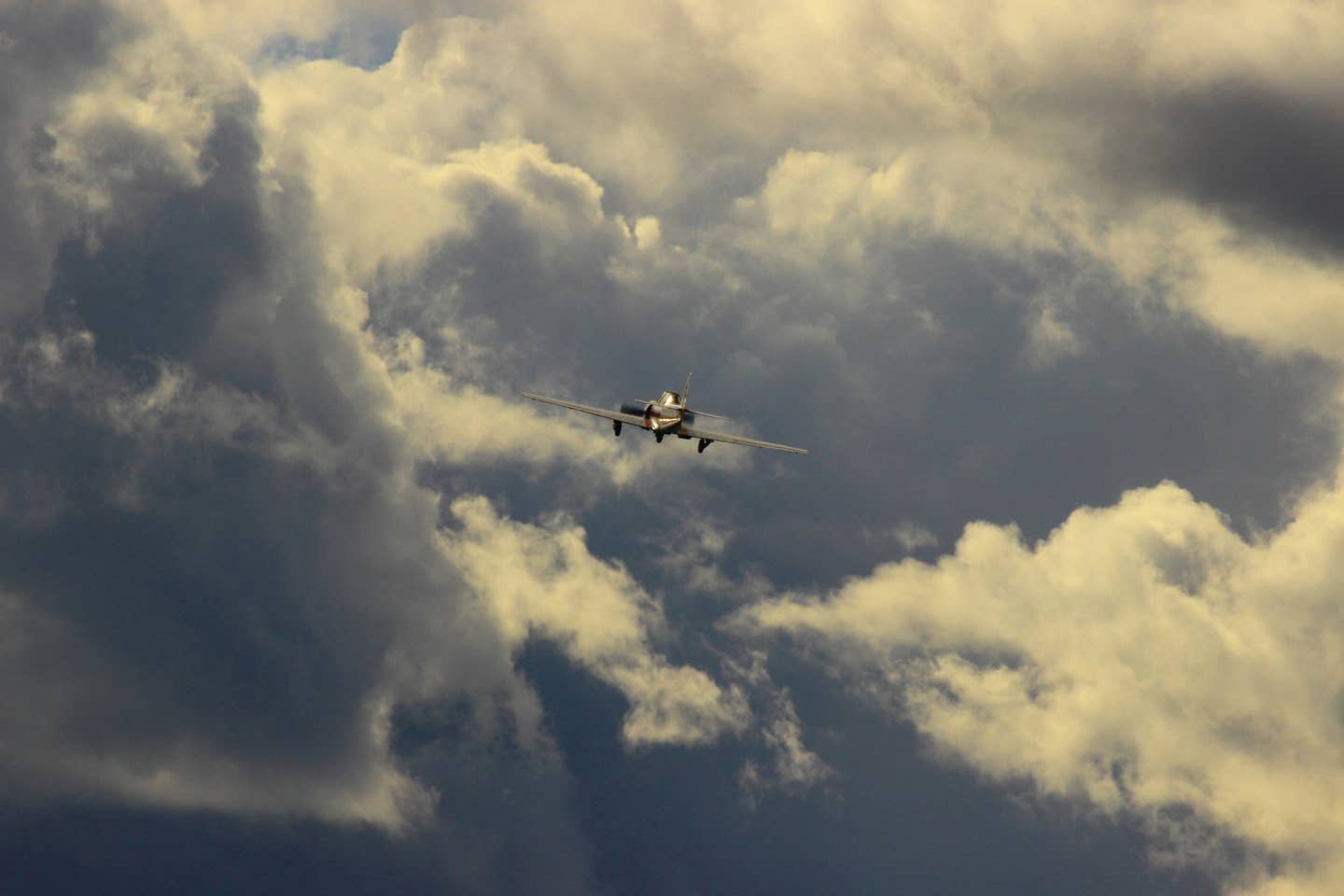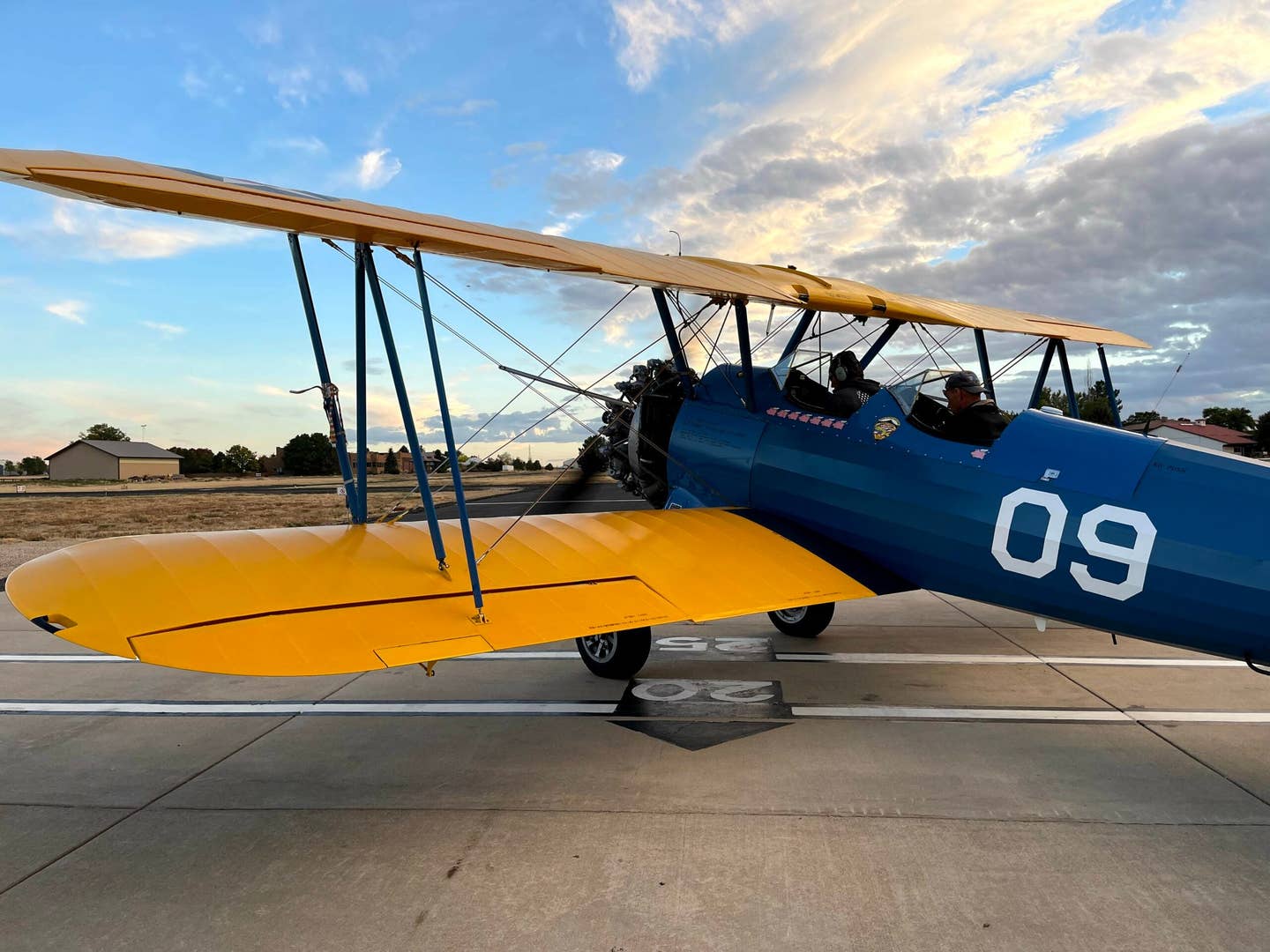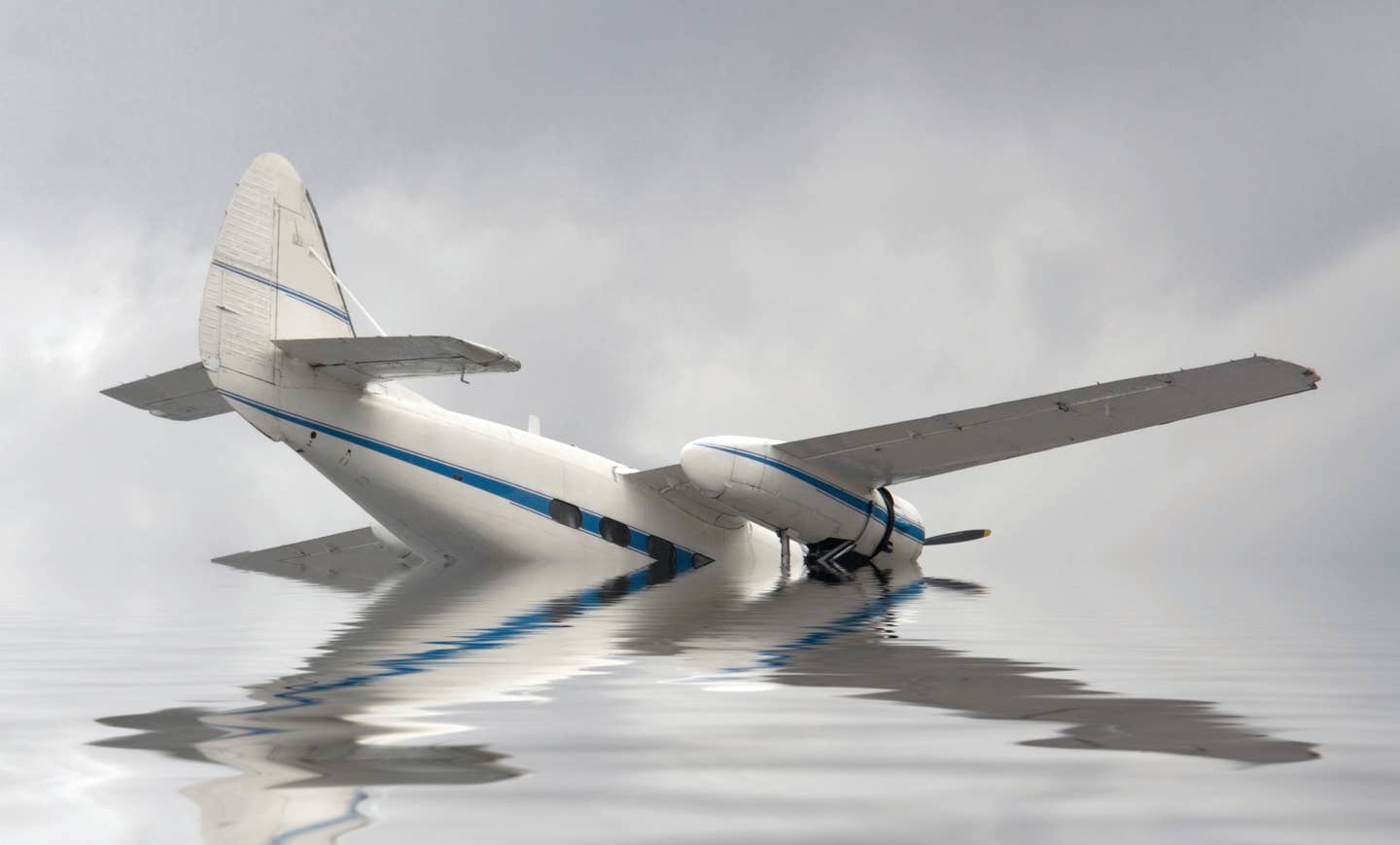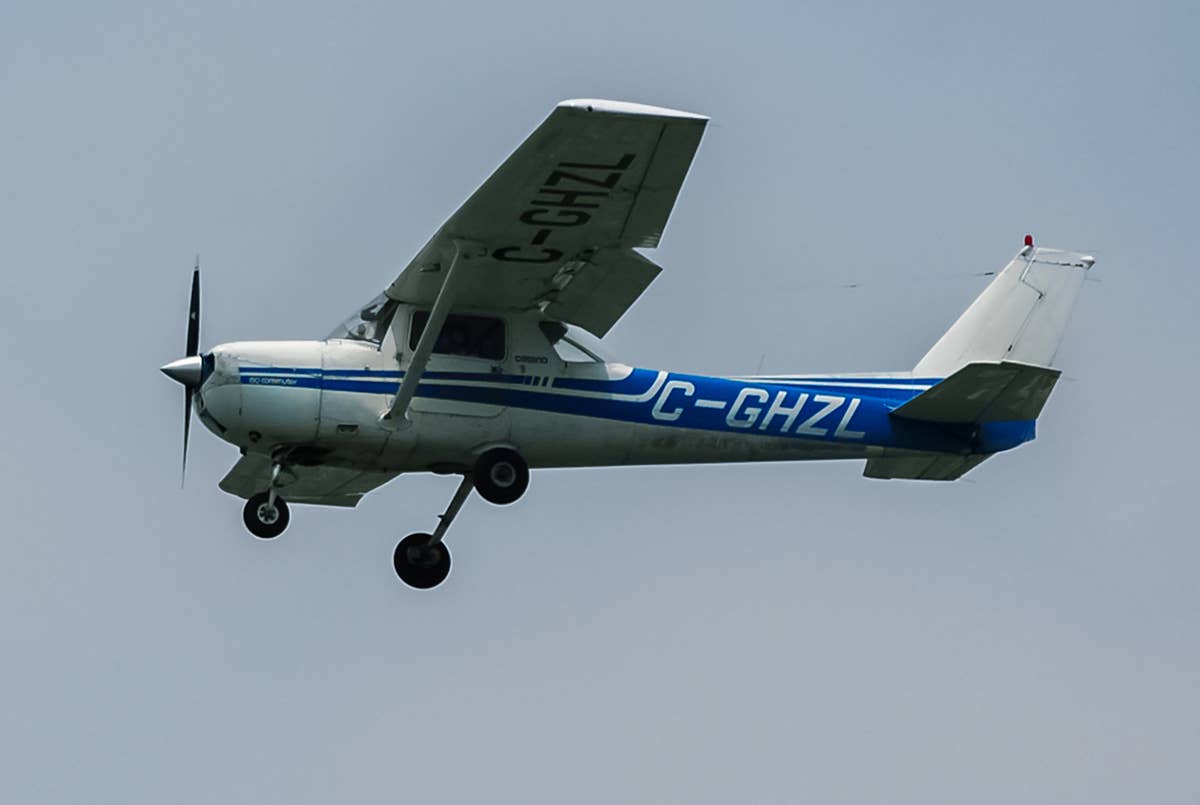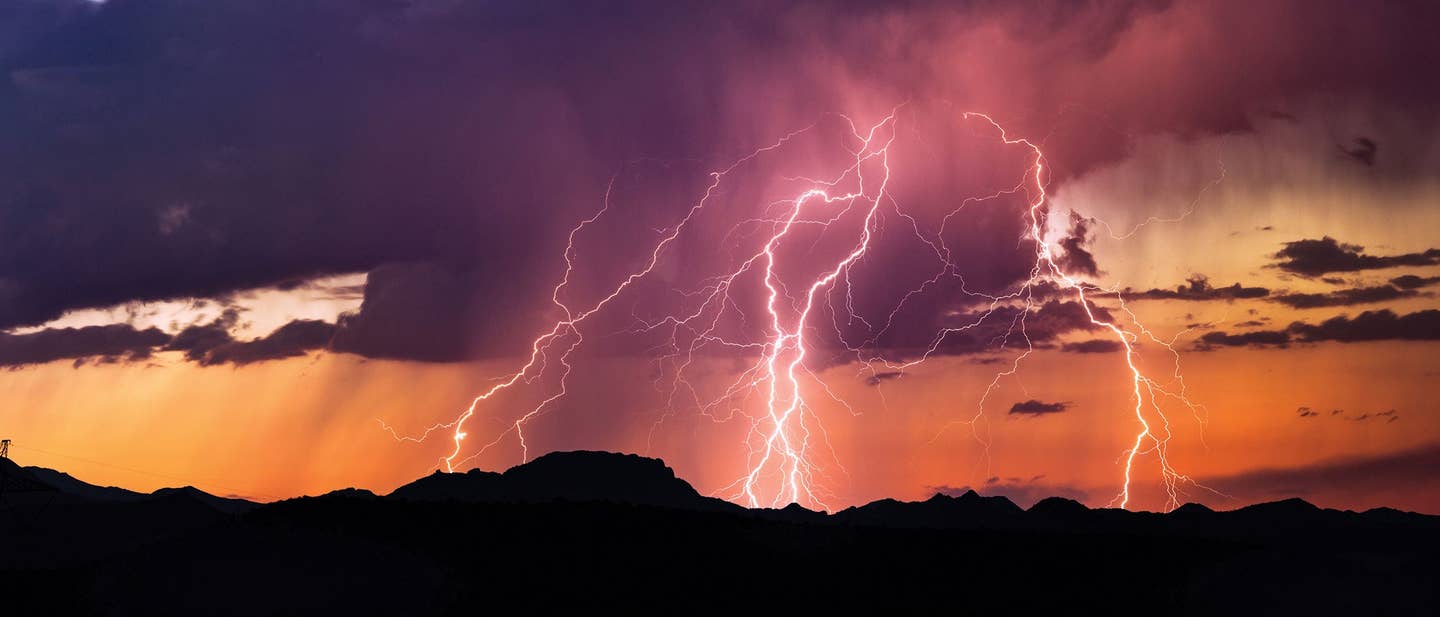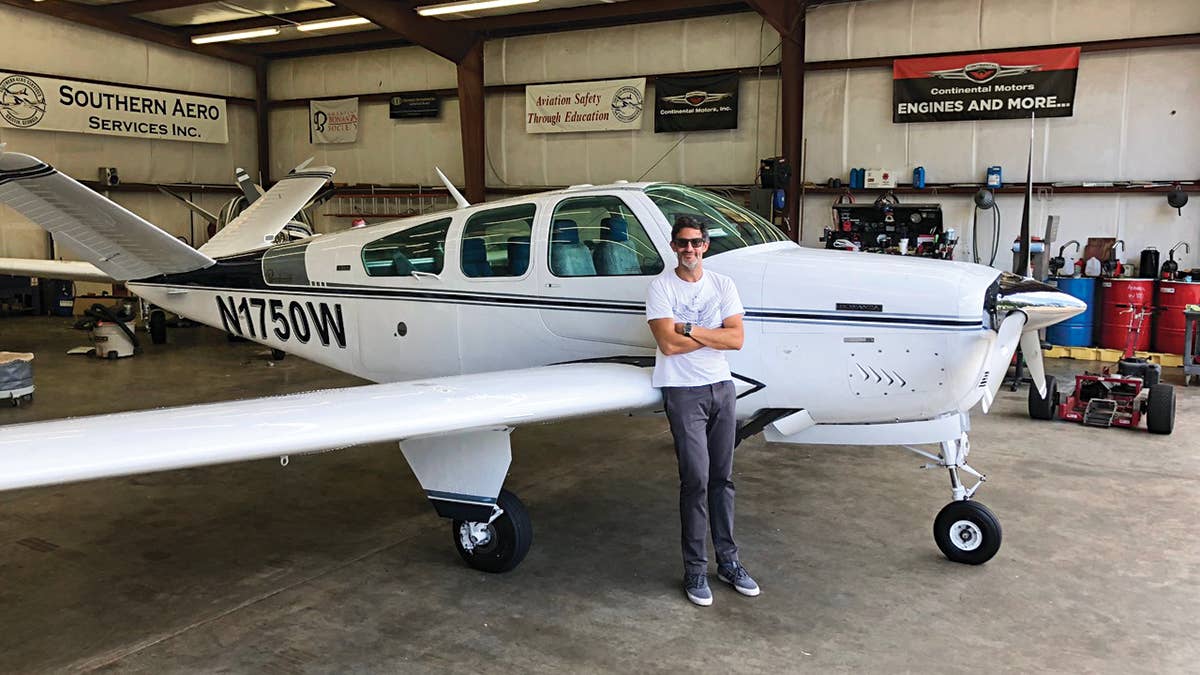
Ben Younger eagerly takes delivery of his new wings in Griffin, Georgia. Ben Younger
In my first column I promised unmitigated honesty, so let’s begin there. Since last writing, a buried detail from the accident has unearthed itself from my memory. The way I told it last month, once I recovered from the near stall-spin there was so little runway left, I simply had to put the airplane down even though the gear wasn’t extended. There might be a bit more to it than that.
The memory recovered is that I stood on the brakes as the airplane slid along the runway. This means I might not have made an active decision to land with the gear up. Yes, it’s possible the braking was just reflexive — or did I think the gear was down and I was trying to slow the airplane? I am still not sure. It’s interesting what the brain decides to retain when you’re sliding on your belly toward the end of a runway at breakneck speeds with smoke pouring through the vents and another person’s life is in your hands. It’s more interesting still to realize that what we believe to be the truth is to some extent colored, a coping strategy to lessen our anxiety or shame moving forward. Either way, there’s no room for it in aviation. Shine the light.
The truth stripped bare looks like this: I should have accelerated in ground effect as I had the last time I departed Telluride, back in April. Then, I screamed off the end of the runway at 125 kias only 20 feet off the deck. When I pulled back on the yoke I had real authority over the lifting surfaces. Had I done the same here, I would have been comfortably faster than any gust trying to ruin my day. Instead, I was thrown by the sluggish takeoff roll and rotated at normal Vr, leaving myself susceptible to the wild winds. Had I really thought through how the airplane was going to behave, I would have expected the loss of performance. And it is all about expectations. If you know it’s going to happen, you can deal. The surprises are what release the hormonal cascade in our brains during an acute stress response — something that might have once been helpful in, say, a saber-toothed tiger attack. None of it helpful in an airplane.
After returning to New York, I ruminated on what my future in aviation, if any, looked like. A single solo flight in the Piper Cherokee I trained in got the stink off and brought everything into sharp relief for me: I missed flying. I missed it badly. I have a new sense of empathy for pilots who must stop flying because of their age or a failed medical, or any other reason left out of their control. It is a real loss. Human flight is a miracle and not something easily given up. I was not going to do so by choice.
Ten weeks to the day after the accident, I flew another airplane from Georgia back to New York and placed it very carefully into my hangar at KMSV. N1750W is my new V-tail Bonanza. While the airplane seems to be perfectly happy with its new life and home, it has not been an easy transition for me, the pilot. Multiple times I have ended a transmission with “eight four mike,” my old tail number.
I have delayed in answering an ATC call because I did not recognize the new callsign. Moreover, I don’t recognize the airplane itself. It might be an identical V35B, but these machines have incredibly unique personalities, even among type. It flies, sounds and even smells different. I’ll spare you the “new-woman-in-my-bed” analogy. Let’s just say I’m having some trouble getting up to speed with the new bird.
The more serious reason the transition has been difficult is that I am reticent to fly. This is a much larger issue than acclimating to a new callsign. I now know when ATC is talking to me, but I am still working on that other thing: you know, fear. Once the decision was made, I knew I needed a new airplane as soon as possible. The insurance company sent me a check for the hull value of 84M (less the cost of the salvage, which I purchased back). The money was just sitting in my bank account. I knew I had to put it into another airplane quickly or I would squander it on frivolous things. Like food. And my mortgage.
There are quite a few ways to buy an airplane, from an old-school handshake for a Super Cub on a local airfield to a weekslong pre-buy on a Dassault trijet in another country. The through-line is that pilots are generally an honest bunch. Yes, I know there are exceptions, so don’t assault the editor with horror stories. But compared to, say, the used-car market, there is a sense of responsibility when you sell someone an airplane. As pilots, our lives depend on that honesty.
That doesn’t mean you shouldn’t exercise due diligence. I hired Neal Schwartz, from Latitude Aviation, a Beechcraft specialist. If you don’t have the time to go hunting yourself or are new to the world of used aircraft, an aircraft broker can be a real help. They help find you the right airplane, go over the logbooks in great detail and handle all of the sales documents and escrow payments. They walk you through the entire transaction from beginning to end. When you hire someone like Neal, who focuses on a single marque, you get the additional expertise that comes with that specialization. N1750W is a 1972 V-tail that lived a quiet life in Michigan with a man named John for the past 18 years. This explains why even though it was built six years before 84M, it has half the number of total hours on the airframe. When I said it flew differently, I actually mean better. There is a tightness in the controls that I don’t recognize. Zero slop or play. On landing, the glareshield in 84M used to shake like a dog trying to pass a peach pit. Not 50W. Rock solid.
The interior, though, leaves quite a bit to be desired. But that was intentional. I told Neal I wanted a V-tail with a Continental 550 conversion (bigger motor), no accident history, excellent paint and an interior that looked like it was taken from a 1970s budget motel. Five zero whiskey has all of that, and additionally came with the distinct scent of mouse pee (it recently sat for a bit). The reason for this odd request was that just before the accident I installed a brand-new interior in 84M. For months, I designed and fretted over every detail, from colors to materials. All cowhide. No synthetics. Suede and leather. The cockpit smelled like John Wayne’s living room. I want it to come with me into the new airplane. It feels a little strange, like when Barbra Streisand cloned her dog, but I am not ready to give up all that work I did, and I want to be reminded about what happened that morning in Telluride. Hopefully a touch of the scent of that acrid smoke remains in the leather. It’s cautionary as much as nostalgic.
For additional peace of mind, I got the plane flown to Bob Ripley’s shop in Georgia to have him do the pre-buy inspection. To say that Bob knows Bonanzas is like saying Willie Nelson knows a little something about weed. We found a few minor things, but John, the former owner, cared greatly for the airplane, and it easily passed inspection. Having Bob sign off instilled a real sense of confidence in the mechanical state of the aircraft. Not so much in the pilot.
Departing Bob’s shop in Cedar Ridge for my first solo flight in the airplane, I fought a strong urge to abort the takeoff. It’s a narrow 3,000-foot runway with a stand of trees at the end. Halfway down the runway, I was sure I was not going to make it, even though every last instrument said fly. Fortunately, I did not have to decide because Bonanzas will fly themselves right off the ground if trimmed properly. I cleared the trees by a mile and soared into the clear air. A minute later I was fine, the flight home uneventful.
Moving forward, I shouldn’t be afraid. I know what happened in Telluride and I know what not to do again. I have hundreds of hours of seat time, many in hard IMC. And yet still I continue to downplay what happened in the telling and retelling of the story. The reality is that I am lucky, by all accounts, to be alive. Since the accident, I’ve buried the memory of the mistake I made, because facing it — even writing it now — is horrifying. But I’m here to be honest. And not make the same mistake twice. That being said, letting the airplane sit in the hangar isn’t helping anyone. It needs be flown, and I need to fly.
The plan is to head out to Beegles Salvage in Greeley, Colorado, next month and watch them disassemble 84M. Say goodbye. Try to appreciate how many other Bonanzas these parts will help keep flying.
A fellow named George Aikens has an avionics/maintenance shop on the field. He will do the work of transferring everything from one airplane to the other. Maybe he’ll let me turn some wrenches.

Subscribe to Our Newsletter
Get the latest FLYING stories delivered directly to your inbox

